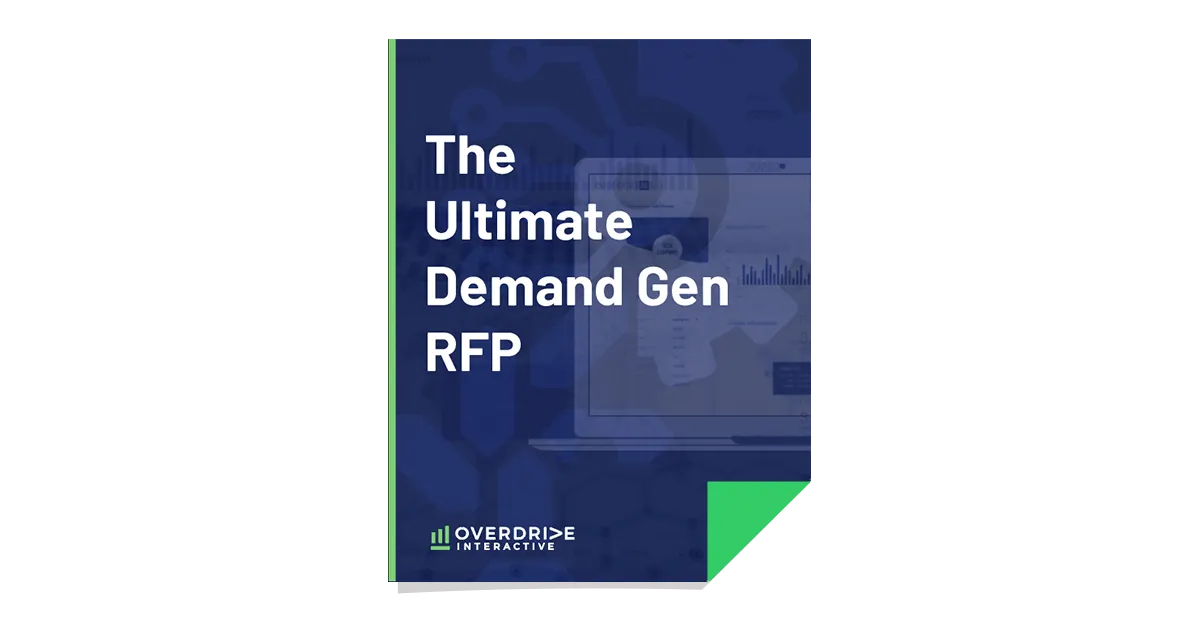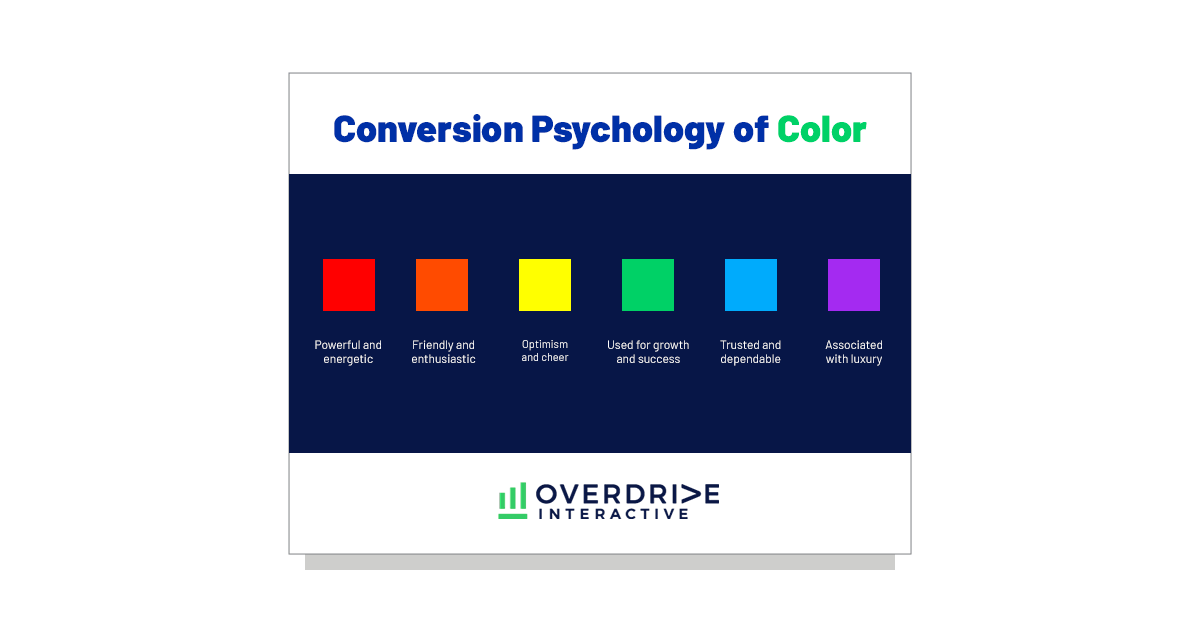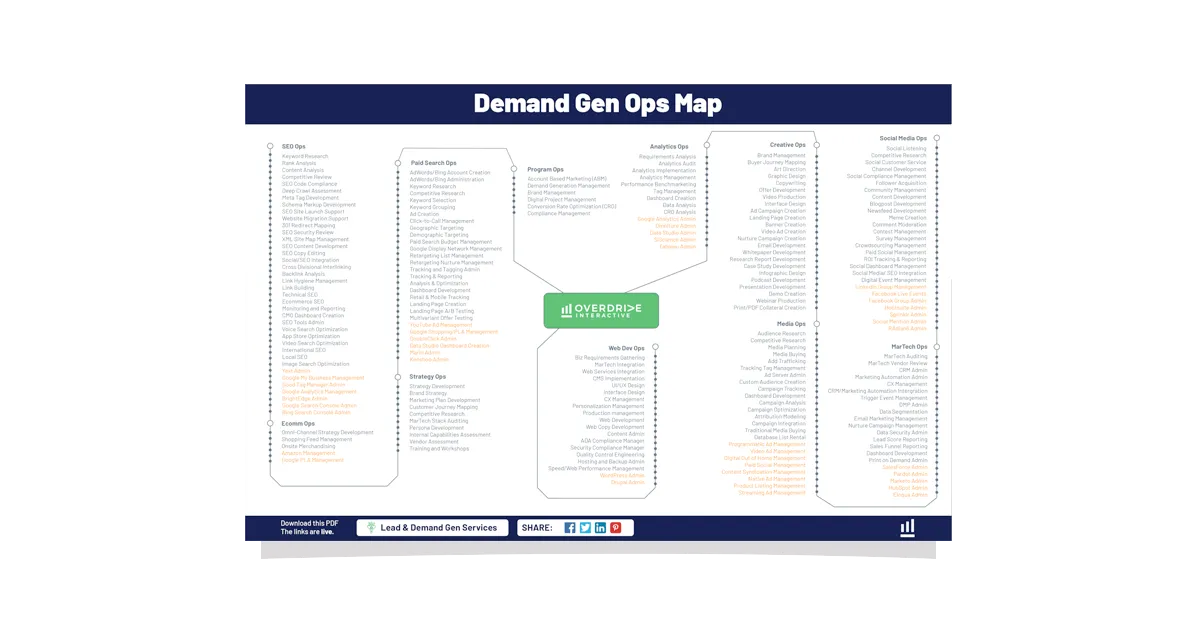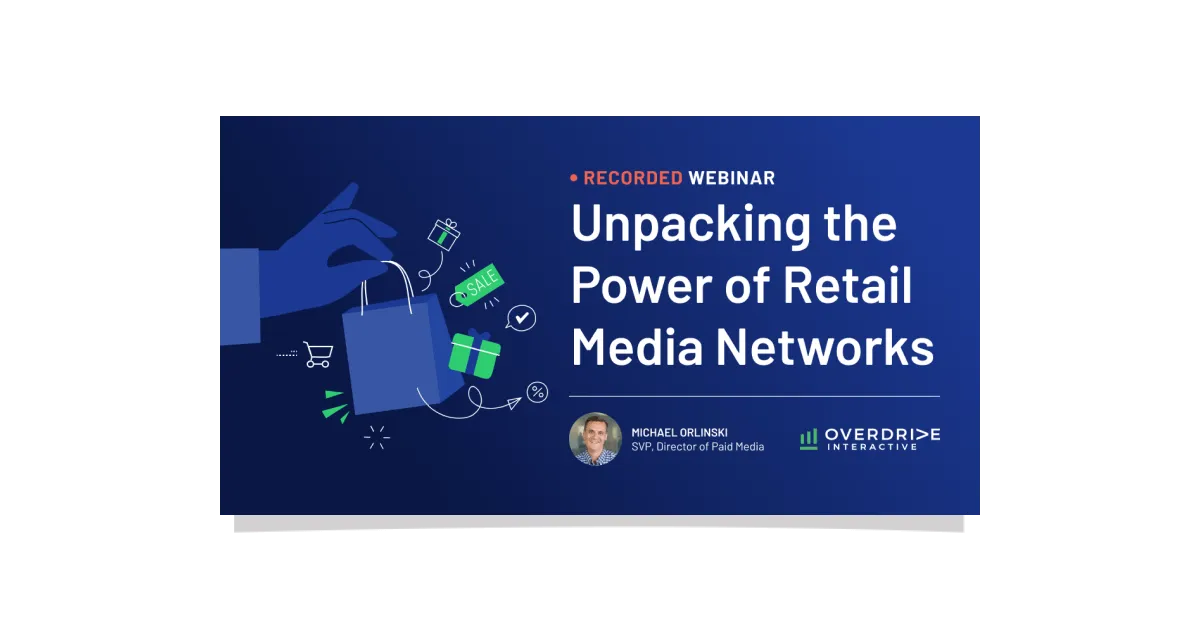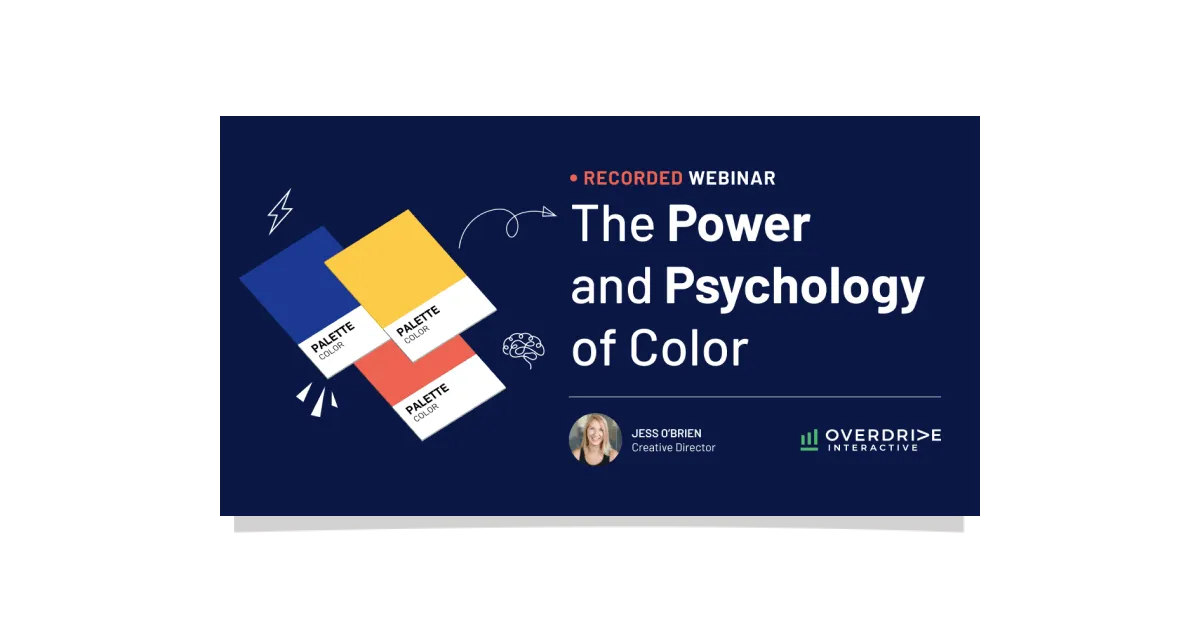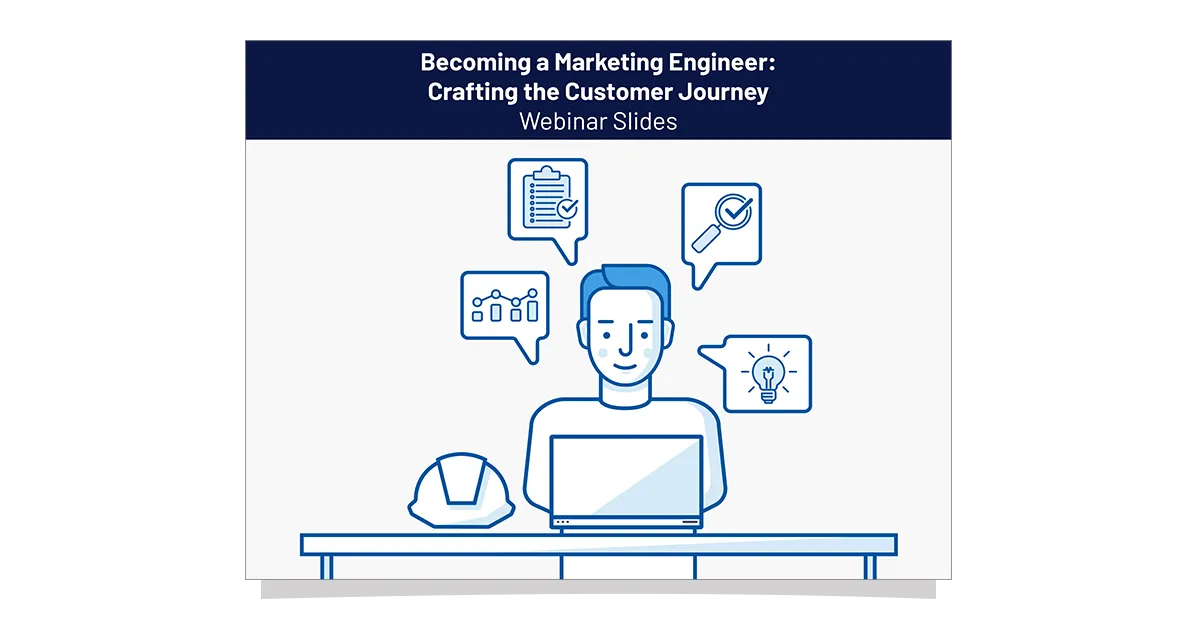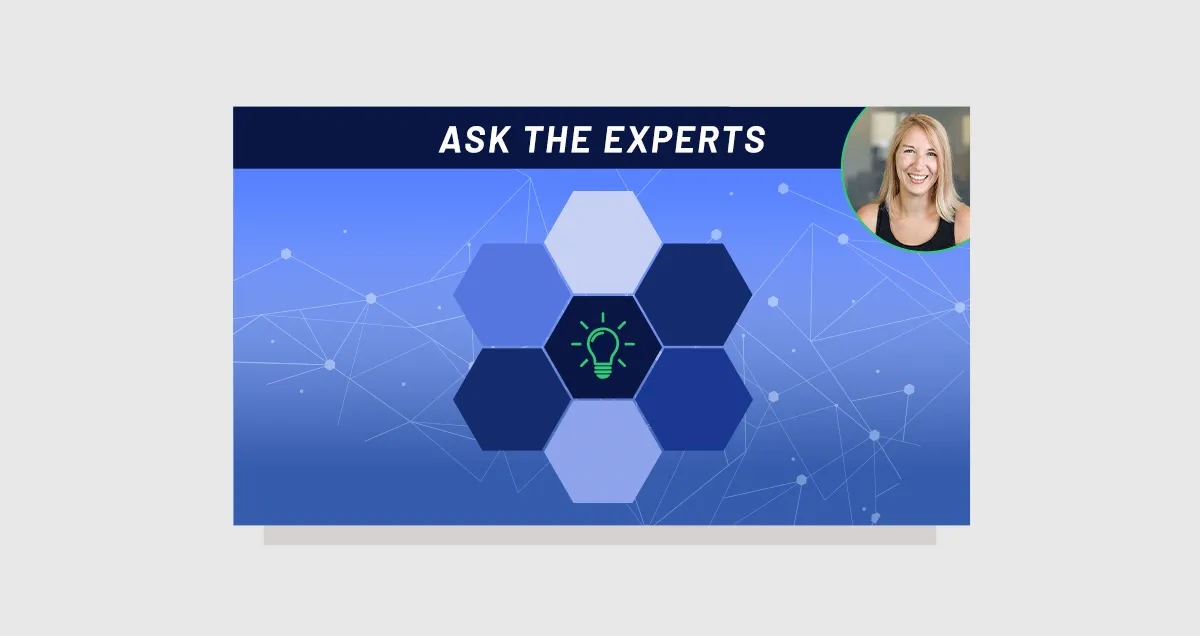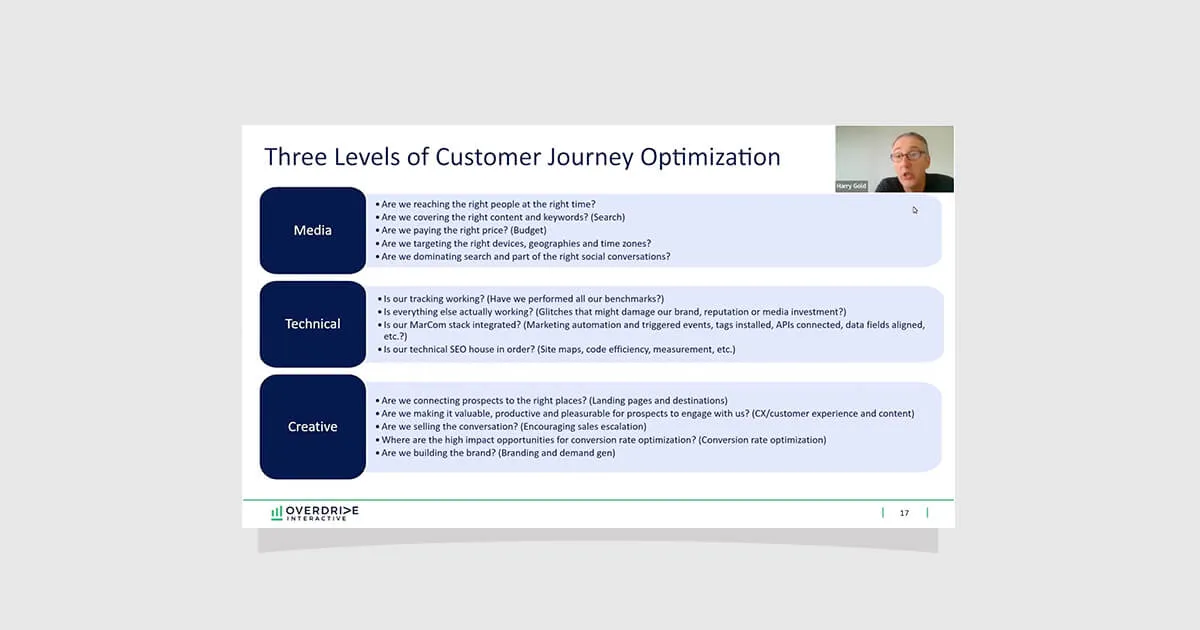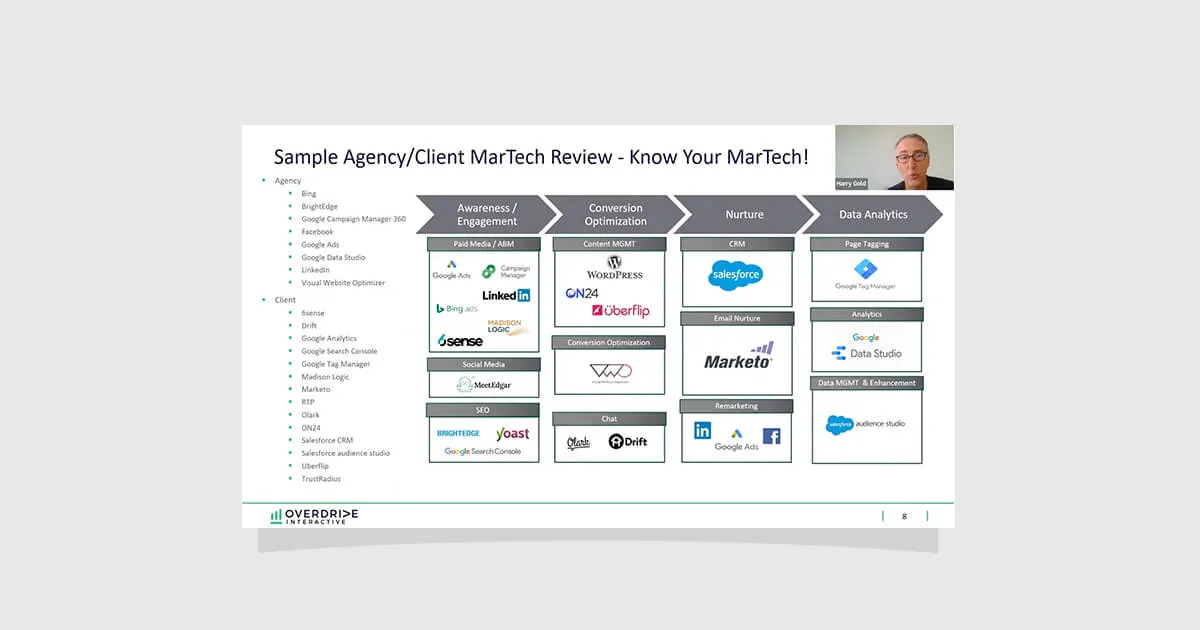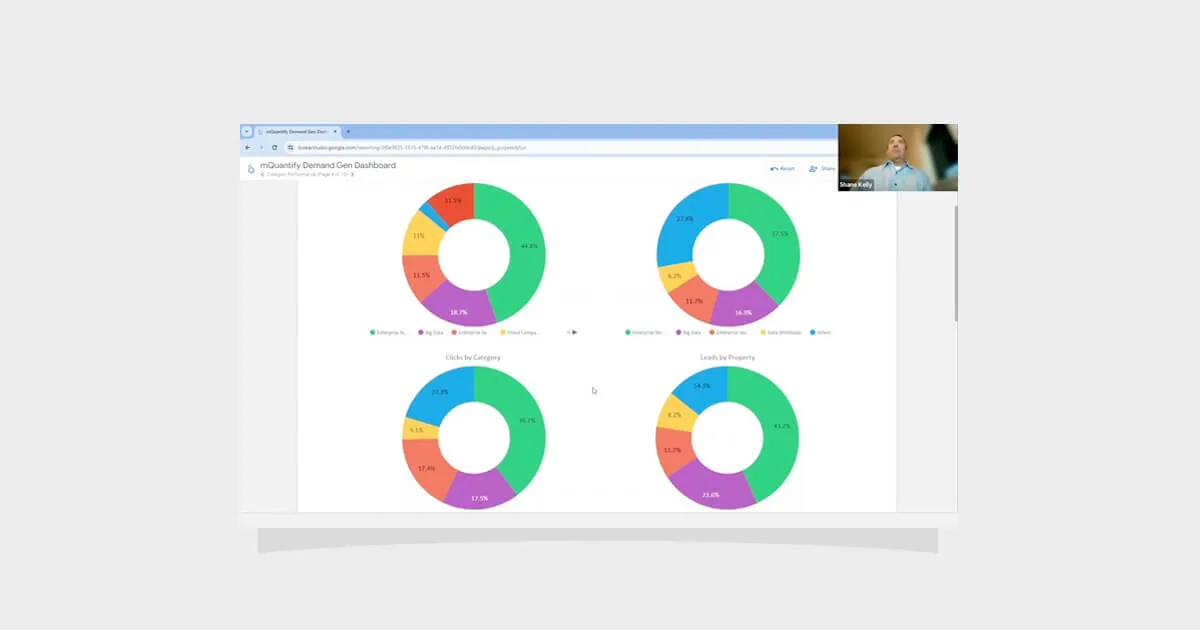The Strategic Case for Organic Social: Why a Strong & Consistent Social Presence Is Your Growth Engine, Trust Layer, and First Line of Defense for Customer Service

In the ever-evolving digital space, social is no longer just a “channel”—it’s a stage. It’s the public square or modern-day water-cooler where discovery, research, service, and reputation management converge, often in real time. Globally—and especially in the U.S.—time spent on these platforms continues to rise, leading CMOs to ask the only question that matters: Is your brand visible, useful, and responsive when it matters most?
For CMOs and growth leaders, social strategy can no longer be treated as secondary to search or traditional paid media tactics. It’s not a “nice to have,” nor should it be loosely managed by interns or seen as a side project. Social can drive measurable business outcomes—and just as importantly, it shapes the intangibles: brand trust, perception, and customer experience. These are the moments and engagements that either deepen loyalty or accelerate churn.
Let’s break down why social is a critical lever for your business, how it extends beyond your digital footprint, and why it should be treated as your first line of defense for both current and prospective customers.
Social Media Reaches the Masses
The numbers tell a compelling story. According to DataReportal, as of 2025, there are 5.3 billion social media users worldwide—nearly 65% of the global population. Collectively, these users spend an average of 2.3 hours per day on social platforms.
This means social is often the first—and most frequent—place customers encounter your brand. Whether they’re scrolling through organic content, influencer mentions, paid ads, or reading customer reviews, your social presence—or lack thereof—sets the tone for trust, relevance, and brand consideration.
Social Is Your First Line of Defense
One of the most overlooked aspects of social media is its critical role in customer service and experience management. Expectations are rising fast. According to Sprout Social:
- 63% of consumers expect faster response times on social than they did a year ago.
- 73% say they will switch to a competitor after a poor experience.
That’s why social is more important than ever. In many cases, your first—and sometimes only—line of communication is a social DM, comment, or mention. Your social team isn’t just posting content—they’re your real-time triage unit, handling service inquiries, managing escalations, and protecting brand reputation. They ensure customers feel heard, valued, and supported.
Remember, your online reputation isn’t defined by what you say about your brand—it’s built on what consumers say about you.
Social Media Drives Consideration, Not Just Awareness
Social is no longer just for top-of-funnel discovery. Today, it plays a major role in the research and consideration phases of the purchase cycle. Here are three key areas of influence:
- Discovery: Platforms like TikTok and Instagram Reels act as discovery engines where users find new brands, products, and services via short-form video.
- Research: Consumers now use social like a visual search engine, asking “best [product] for…” or “how to use [product].” This behavior shift should inform how CMOs craft their social strategies.
- Decision Assistance: User-generated content (UGC), creator reviews, and online communities help reduce purchase risk. These social signals build buyer confidence and reduce the chance of remorse.
When customers encounter your ads, the next step is often checking your profile to gauge credibility. If your organic presence is weak, inconsistent, or outdated, you risk losing them at their moment of highest intent.
Social Media Now Impacts Organic Search
As of July 10, 2025, Google began indexing eligible Instagram content—including Reels, carousels, captions, bios, alt text, and more—and displaying it in search results. That means your social content is now part of your organic search footprint.
It’s not just about what you post moving forward—even content from as far back as 2020 may be indexed. Brands should conduct audits of legacy social content to ensure relevance and alignment with current messaging and SEO goals.
Final Thoughts: Why This Matters Now
In today’s fragmented media environment, a clear, consistent, and impactful social presence isn’t just a marketing advantage—it’s a business necessity.
At Overdrive, we craft integrated social strategies that unite organic and paid approaches. We help brands capture attention, drive engagement, and support customers at every stage of their journey. From proactive and reactive community management to content creation, social listening, and analytics—we ensure your brand voice stands out and your performance is measurable.
What sets us apart? We connect social engagement with real business outcomes. We don’t just chase likes and shares—we focus on qualified traffic, loyalty, and conversion.
Ready to build a social presence that actually moves the needle? Whether you need to refine your organic content, scale paid media, or align social with your full digital strategy, Overdrive is here to help. Reach out today, and let’s build a presence your audience can trust.
The Strategic Case for Organic Social: Why a Strong & Consistent Social Presence Is Your Growth Engine, Trust Layer, and First Line of Defense for Customer Service

Download the guide to:
In the ever-evolving digital space, social is no longer just a “channel”—it’s a stage. It’s the public square or modern-day water-cooler where discovery, research, service, and reputation management converge, often in real time. Globally—and especially in the U.S.—time spent on these platforms continues to rise, leading CMOs to ask the only question that matters: Is your brand visible, useful, and responsive when it matters most?
For CMOs and growth leaders, social strategy can no longer be treated as secondary to search or traditional paid media tactics. It’s not a “nice to have,” nor should it be loosely managed by interns or seen as a side project. Social can drive measurable business outcomes—and just as importantly, it shapes the intangibles: brand trust, perception, and customer experience. These are the moments and engagements that either deepen loyalty or accelerate churn.
Let’s break down why social is a critical lever for your business, how it extends beyond your digital footprint, and why it should be treated as your first line of defense for both current and prospective customers.
Social Media Reaches the Masses
The numbers tell a compelling story. According to DataReportal, as of 2025, there are 5.3 billion social media users worldwide—nearly 65% of the global population. Collectively, these users spend an average of 2.3 hours per day on social platforms.
This means social is often the first—and most frequent—place customers encounter your brand. Whether they’re scrolling through organic content, influencer mentions, paid ads, or reading customer reviews, your social presence—or lack thereof—sets the tone for trust, relevance, and brand consideration.
Social Is Your First Line of Defense
One of the most overlooked aspects of social media is its critical role in customer service and experience management. Expectations are rising fast. According to Sprout Social:
- 63% of consumers expect faster response times on social than they did a year ago.
- 73% say they will switch to a competitor after a poor experience.
That’s why social is more important than ever. In many cases, your first—and sometimes only—line of communication is a social DM, comment, or mention. Your social team isn’t just posting content—they’re your real-time triage unit, handling service inquiries, managing escalations, and protecting brand reputation. They ensure customers feel heard, valued, and supported.
Remember, your online reputation isn’t defined by what you say about your brand—it’s built on what consumers say about you.
Social Media Drives Consideration, Not Just Awareness
Social is no longer just for top-of-funnel discovery. Today, it plays a major role in the research and consideration phases of the purchase cycle. Here are three key areas of influence:
- Discovery: Platforms like TikTok and Instagram Reels act as discovery engines where users find new brands, products, and services via short-form video.
- Research: Consumers now use social like a visual search engine, asking “best [product] for…” or “how to use [product].” This behavior shift should inform how CMOs craft their social strategies.
- Decision Assistance: User-generated content (UGC), creator reviews, and online communities help reduce purchase risk. These social signals build buyer confidence and reduce the chance of remorse.
When customers encounter your ads, the next step is often checking your profile to gauge credibility. If your organic presence is weak, inconsistent, or outdated, you risk losing them at their moment of highest intent.
Social Media Now Impacts Organic Search
As of July 10, 2025, Google began indexing eligible Instagram content—including Reels, carousels, captions, bios, alt text, and more—and displaying it in search results. That means your social content is now part of your organic search footprint.
It’s not just about what you post moving forward—even content from as far back as 2020 may be indexed. Brands should conduct audits of legacy social content to ensure relevance and alignment with current messaging and SEO goals.
Final Thoughts: Why This Matters Now
In today’s fragmented media environment, a clear, consistent, and impactful social presence isn’t just a marketing advantage—it’s a business necessity.
At Overdrive, we craft integrated social strategies that unite organic and paid approaches. We help brands capture attention, drive engagement, and support customers at every stage of their journey. From proactive and reactive community management to content creation, social listening, and analytics—we ensure your brand voice stands out and your performance is measurable.
What sets us apart? We connect social engagement with real business outcomes. We don’t just chase likes and shares—we focus on qualified traffic, loyalty, and conversion.
Ready to build a social presence that actually moves the needle? Whether you need to refine your organic content, scale paid media, or align social with your full digital strategy, Overdrive is here to help. Reach out today, and let’s build a presence your audience can trust.
The Strategic Case for Organic Social: Why a Strong & Consistent Social Presence Is Your Growth Engine, Trust Layer, and First Line of Defense for Customer Service

Download the guide to:
In the ever-evolving digital space, social is no longer just a “channel”—it’s a stage. It’s the public square or modern-day water-cooler where discovery, research, service, and reputation management converge, often in real time. Globally—and especially in the U.S.—time spent on these platforms continues to rise, leading CMOs to ask the only question that matters: Is your brand visible, useful, and responsive when it matters most?
For CMOs and growth leaders, social strategy can no longer be treated as secondary to search or traditional paid media tactics. It’s not a “nice to have,” nor should it be loosely managed by interns or seen as a side project. Social can drive measurable business outcomes—and just as importantly, it shapes the intangibles: brand trust, perception, and customer experience. These are the moments and engagements that either deepen loyalty or accelerate churn.
Let’s break down why social is a critical lever for your business, how it extends beyond your digital footprint, and why it should be treated as your first line of defense for both current and prospective customers.
Social Media Reaches the Masses
The numbers tell a compelling story. According to DataReportal, as of 2025, there are 5.3 billion social media users worldwide—nearly 65% of the global population. Collectively, these users spend an average of 2.3 hours per day on social platforms.
This means social is often the first—and most frequent—place customers encounter your brand. Whether they’re scrolling through organic content, influencer mentions, paid ads, or reading customer reviews, your social presence—or lack thereof—sets the tone for trust, relevance, and brand consideration.
Social Is Your First Line of Defense
One of the most overlooked aspects of social media is its critical role in customer service and experience management. Expectations are rising fast. According to Sprout Social:
- 63% of consumers expect faster response times on social than they did a year ago.
- 73% say they will switch to a competitor after a poor experience.
That’s why social is more important than ever. In many cases, your first—and sometimes only—line of communication is a social DM, comment, or mention. Your social team isn’t just posting content—they’re your real-time triage unit, handling service inquiries, managing escalations, and protecting brand reputation. They ensure customers feel heard, valued, and supported.
Remember, your online reputation isn’t defined by what you say about your brand—it’s built on what consumers say about you.
Social Media Drives Consideration, Not Just Awareness
Social is no longer just for top-of-funnel discovery. Today, it plays a major role in the research and consideration phases of the purchase cycle. Here are three key areas of influence:
- Discovery: Platforms like TikTok and Instagram Reels act as discovery engines where users find new brands, products, and services via short-form video.
- Research: Consumers now use social like a visual search engine, asking “best [product] for…” or “how to use [product].” This behavior shift should inform how CMOs craft their social strategies.
- Decision Assistance: User-generated content (UGC), creator reviews, and online communities help reduce purchase risk. These social signals build buyer confidence and reduce the chance of remorse.
When customers encounter your ads, the next step is often checking your profile to gauge credibility. If your organic presence is weak, inconsistent, or outdated, you risk losing them at their moment of highest intent.
Social Media Now Impacts Organic Search
As of July 10, 2025, Google began indexing eligible Instagram content—including Reels, carousels, captions, bios, alt text, and more—and displaying it in search results. That means your social content is now part of your organic search footprint.
It’s not just about what you post moving forward—even content from as far back as 2020 may be indexed. Brands should conduct audits of legacy social content to ensure relevance and alignment with current messaging and SEO goals.
Final Thoughts: Why This Matters Now
In today’s fragmented media environment, a clear, consistent, and impactful social presence isn’t just a marketing advantage—it’s a business necessity.
At Overdrive, we craft integrated social strategies that unite organic and paid approaches. We help brands capture attention, drive engagement, and support customers at every stage of their journey. From proactive and reactive community management to content creation, social listening, and analytics—we ensure your brand voice stands out and your performance is measurable.
What sets us apart? We connect social engagement with real business outcomes. We don’t just chase likes and shares—we focus on qualified traffic, loyalty, and conversion.
Ready to build a social presence that actually moves the needle? Whether you need to refine your organic content, scale paid media, or align social with your full digital strategy, Overdrive is here to help. Reach out today, and let’s build a presence your audience can trust.
The Strategic Case for Organic Social: Why a Strong & Consistent Social Presence Is Your Growth Engine, Trust Layer, and First Line of Defense for Customer Service

Key Insights From Our Research
In the ever-evolving digital space, social is no longer just a “channel”—it’s a stage. It’s the public square or modern-day water-cooler where discovery, research, service, and reputation management converge, often in real time. Globally—and especially in the U.S.—time spent on these platforms continues to rise, leading CMOs to ask the only question that matters: Is your brand visible, useful, and responsive when it matters most?
For CMOs and growth leaders, social strategy can no longer be treated as secondary to search or traditional paid media tactics. It’s not a “nice to have,” nor should it be loosely managed by interns or seen as a side project. Social can drive measurable business outcomes—and just as importantly, it shapes the intangibles: brand trust, perception, and customer experience. These are the moments and engagements that either deepen loyalty or accelerate churn.
Let’s break down why social is a critical lever for your business, how it extends beyond your digital footprint, and why it should be treated as your first line of defense for both current and prospective customers.
Social Media Reaches the Masses
The numbers tell a compelling story. According to DataReportal, as of 2025, there are 5.3 billion social media users worldwide—nearly 65% of the global population. Collectively, these users spend an average of 2.3 hours per day on social platforms.
This means social is often the first—and most frequent—place customers encounter your brand. Whether they’re scrolling through organic content, influencer mentions, paid ads, or reading customer reviews, your social presence—or lack thereof—sets the tone for trust, relevance, and brand consideration.
Social Is Your First Line of Defense
One of the most overlooked aspects of social media is its critical role in customer service and experience management. Expectations are rising fast. According to Sprout Social:
- 63% of consumers expect faster response times on social than they did a year ago.
- 73% say they will switch to a competitor after a poor experience.
That’s why social is more important than ever. In many cases, your first—and sometimes only—line of communication is a social DM, comment, or mention. Your social team isn’t just posting content—they’re your real-time triage unit, handling service inquiries, managing escalations, and protecting brand reputation. They ensure customers feel heard, valued, and supported.
Remember, your online reputation isn’t defined by what you say about your brand—it’s built on what consumers say about you.
Social Media Drives Consideration, Not Just Awareness
Social is no longer just for top-of-funnel discovery. Today, it plays a major role in the research and consideration phases of the purchase cycle. Here are three key areas of influence:
- Discovery: Platforms like TikTok and Instagram Reels act as discovery engines where users find new brands, products, and services via short-form video.
- Research: Consumers now use social like a visual search engine, asking “best [product] for…” or “how to use [product].” This behavior shift should inform how CMOs craft their social strategies.
- Decision Assistance: User-generated content (UGC), creator reviews, and online communities help reduce purchase risk. These social signals build buyer confidence and reduce the chance of remorse.
When customers encounter your ads, the next step is often checking your profile to gauge credibility. If your organic presence is weak, inconsistent, or outdated, you risk losing them at their moment of highest intent.
Social Media Now Impacts Organic Search
As of July 10, 2025, Google began indexing eligible Instagram content—including Reels, carousels, captions, bios, alt text, and more—and displaying it in search results. That means your social content is now part of your organic search footprint.
It’s not just about what you post moving forward—even content from as far back as 2020 may be indexed. Brands should conduct audits of legacy social content to ensure relevance and alignment with current messaging and SEO goals.
Final Thoughts: Why This Matters Now
In today’s fragmented media environment, a clear, consistent, and impactful social presence isn’t just a marketing advantage—it’s a business necessity.
At Overdrive, we craft integrated social strategies that unite organic and paid approaches. We help brands capture attention, drive engagement, and support customers at every stage of their journey. From proactive and reactive community management to content creation, social listening, and analytics—we ensure your brand voice stands out and your performance is measurable.
What sets us apart? We connect social engagement with real business outcomes. We don’t just chase likes and shares—we focus on qualified traffic, loyalty, and conversion.
Ready to build a social presence that actually moves the needle? Whether you need to refine your organic content, scale paid media, or align social with your full digital strategy, Overdrive is here to help. Reach out today, and let’s build a presence your audience can trust.
The Strategic Case for Organic Social: Why a Strong & Consistent Social Presence Is Your Growth Engine, Trust Layer, and First Line of Defense for Customer Service
Get the Complete Whitepaper
The Strategic Case for Organic Social: Why a Strong & Consistent Social Presence Is Your Growth Engine, Trust Layer, and First Line of Defense for Customer Service
In the ever-evolving digital space, social is no longer just a “channel”—it’s a stage. It’s the public square or modern-day water-cooler where discovery, research, service, and reputation management converge, often in real time. Globally—and especially in the U.S.—time spent on these platforms continues to rise, leading CMOs to ask the only question that matters: Is your brand visible, useful, and responsive when it matters most?
For CMOs and growth leaders, social strategy can no longer be treated as secondary to search or traditional paid media tactics. It’s not a “nice to have,” nor should it be loosely managed by interns or seen as a side project. Social can drive measurable business outcomes—and just as importantly, it shapes the intangibles: brand trust, perception, and customer experience. These are the moments and engagements that either deepen loyalty or accelerate churn.
Let’s break down why social is a critical lever for your business, how it extends beyond your digital footprint, and why it should be treated as your first line of defense for both current and prospective customers.
Social Media Reaches the Masses
The numbers tell a compelling story. According to DataReportal, as of 2025, there are 5.3 billion social media users worldwide—nearly 65% of the global population. Collectively, these users spend an average of 2.3 hours per day on social platforms.
This means social is often the first—and most frequent—place customers encounter your brand. Whether they’re scrolling through organic content, influencer mentions, paid ads, or reading customer reviews, your social presence—or lack thereof—sets the tone for trust, relevance, and brand consideration.
Social Is Your First Line of Defense
One of the most overlooked aspects of social media is its critical role in customer service and experience management. Expectations are rising fast. According to Sprout Social:
- 63% of consumers expect faster response times on social than they did a year ago.
- 73% say they will switch to a competitor after a poor experience.
That’s why social is more important than ever. In many cases, your first—and sometimes only—line of communication is a social DM, comment, or mention. Your social team isn’t just posting content—they’re your real-time triage unit, handling service inquiries, managing escalations, and protecting brand reputation. They ensure customers feel heard, valued, and supported.
Remember, your online reputation isn’t defined by what you say about your brand—it’s built on what consumers say about you.
Social Media Drives Consideration, Not Just Awareness
Social is no longer just for top-of-funnel discovery. Today, it plays a major role in the research and consideration phases of the purchase cycle. Here are three key areas of influence:
- Discovery: Platforms like TikTok and Instagram Reels act as discovery engines where users find new brands, products, and services via short-form video.
- Research: Consumers now use social like a visual search engine, asking “best [product] for…” or “how to use [product].” This behavior shift should inform how CMOs craft their social strategies.
- Decision Assistance: User-generated content (UGC), creator reviews, and online communities help reduce purchase risk. These social signals build buyer confidence and reduce the chance of remorse.
When customers encounter your ads, the next step is often checking your profile to gauge credibility. If your organic presence is weak, inconsistent, or outdated, you risk losing them at their moment of highest intent.
Social Media Now Impacts Organic Search
As of July 10, 2025, Google began indexing eligible Instagram content—including Reels, carousels, captions, bios, alt text, and more—and displaying it in search results. That means your social content is now part of your organic search footprint.
It’s not just about what you post moving forward—even content from as far back as 2020 may be indexed. Brands should conduct audits of legacy social content to ensure relevance and alignment with current messaging and SEO goals.
Final Thoughts: Why This Matters Now
In today’s fragmented media environment, a clear, consistent, and impactful social presence isn’t just a marketing advantage—it’s a business necessity.
At Overdrive, we craft integrated social strategies that unite organic and paid approaches. We help brands capture attention, drive engagement, and support customers at every stage of their journey. From proactive and reactive community management to content creation, social listening, and analytics—we ensure your brand voice stands out and your performance is measurable.
What sets us apart? We connect social engagement with real business outcomes. We don’t just chase likes and shares—we focus on qualified traffic, loyalty, and conversion.
Ready to build a social presence that actually moves the needle? Whether you need to refine your organic content, scale paid media, or align social with your full digital strategy, Overdrive is here to help. Reach out today, and let’s build a presence your audience can trust.

The Strategic Case for Organic Social: Why a Strong & Consistent Social Presence Is Your Growth Engine, Trust Layer, and First Line of Defense for Customer Service
Get the Slides
The Strategic Case for Organic Social: Why a Strong & Consistent Social Presence Is Your Growth Engine, Trust Layer, and First Line of Defense for Customer Service
In the ever-evolving digital space, social is no longer just a “channel”—it’s a stage. It’s the public square or modern-day water-cooler where discovery, research, service, and reputation management converge, often in real time. Globally—and especially in the U.S.—time spent on these platforms continues to rise, leading CMOs to ask the only question that matters: Is your brand visible, useful, and responsive when it matters most?
For CMOs and growth leaders, social strategy can no longer be treated as secondary to search or traditional paid media tactics. It’s not a “nice to have,” nor should it be loosely managed by interns or seen as a side project. Social can drive measurable business outcomes—and just as importantly, it shapes the intangibles: brand trust, perception, and customer experience. These are the moments and engagements that either deepen loyalty or accelerate churn.
Let’s break down why social is a critical lever for your business, how it extends beyond your digital footprint, and why it should be treated as your first line of defense for both current and prospective customers.
Social Media Reaches the Masses
The numbers tell a compelling story. According to DataReportal, as of 2025, there are 5.3 billion social media users worldwide—nearly 65% of the global population. Collectively, these users spend an average of 2.3 hours per day on social platforms.
This means social is often the first—and most frequent—place customers encounter your brand. Whether they’re scrolling through organic content, influencer mentions, paid ads, or reading customer reviews, your social presence—or lack thereof—sets the tone for trust, relevance, and brand consideration.
Social Is Your First Line of Defense
One of the most overlooked aspects of social media is its critical role in customer service and experience management. Expectations are rising fast. According to Sprout Social:
- 63% of consumers expect faster response times on social than they did a year ago.
- 73% say they will switch to a competitor after a poor experience.
That’s why social is more important than ever. In many cases, your first—and sometimes only—line of communication is a social DM, comment, or mention. Your social team isn’t just posting content—they’re your real-time triage unit, handling service inquiries, managing escalations, and protecting brand reputation. They ensure customers feel heard, valued, and supported.
Remember, your online reputation isn’t defined by what you say about your brand—it’s built on what consumers say about you.
Social Media Drives Consideration, Not Just Awareness
Social is no longer just for top-of-funnel discovery. Today, it plays a major role in the research and consideration phases of the purchase cycle. Here are three key areas of influence:
- Discovery: Platforms like TikTok and Instagram Reels act as discovery engines where users find new brands, products, and services via short-form video.
- Research: Consumers now use social like a visual search engine, asking “best [product] for…” or “how to use [product].” This behavior shift should inform how CMOs craft their social strategies.
- Decision Assistance: User-generated content (UGC), creator reviews, and online communities help reduce purchase risk. These social signals build buyer confidence and reduce the chance of remorse.
When customers encounter your ads, the next step is often checking your profile to gauge credibility. If your organic presence is weak, inconsistent, or outdated, you risk losing them at their moment of highest intent.
Social Media Now Impacts Organic Search
As of July 10, 2025, Google began indexing eligible Instagram content—including Reels, carousels, captions, bios, alt text, and more—and displaying it in search results. That means your social content is now part of your organic search footprint.
It’s not just about what you post moving forward—even content from as far back as 2020 may be indexed. Brands should conduct audits of legacy social content to ensure relevance and alignment with current messaging and SEO goals.
Final Thoughts: Why This Matters Now
In today’s fragmented media environment, a clear, consistent, and impactful social presence isn’t just a marketing advantage—it’s a business necessity.
At Overdrive, we craft integrated social strategies that unite organic and paid approaches. We help brands capture attention, drive engagement, and support customers at every stage of their journey. From proactive and reactive community management to content creation, social listening, and analytics—we ensure your brand voice stands out and your performance is measurable.
What sets us apart? We connect social engagement with real business outcomes. We don’t just chase likes and shares—we focus on qualified traffic, loyalty, and conversion.
Ready to build a social presence that actually moves the needle? Whether you need to refine your organic content, scale paid media, or align social with your full digital strategy, Overdrive is here to help. Reach out today, and let’s build a presence your audience can trust.

The Strategic Case for Organic Social: Why a Strong & Consistent Social Presence Is Your Growth Engine, Trust Layer, and First Line of Defense for Customer Service






